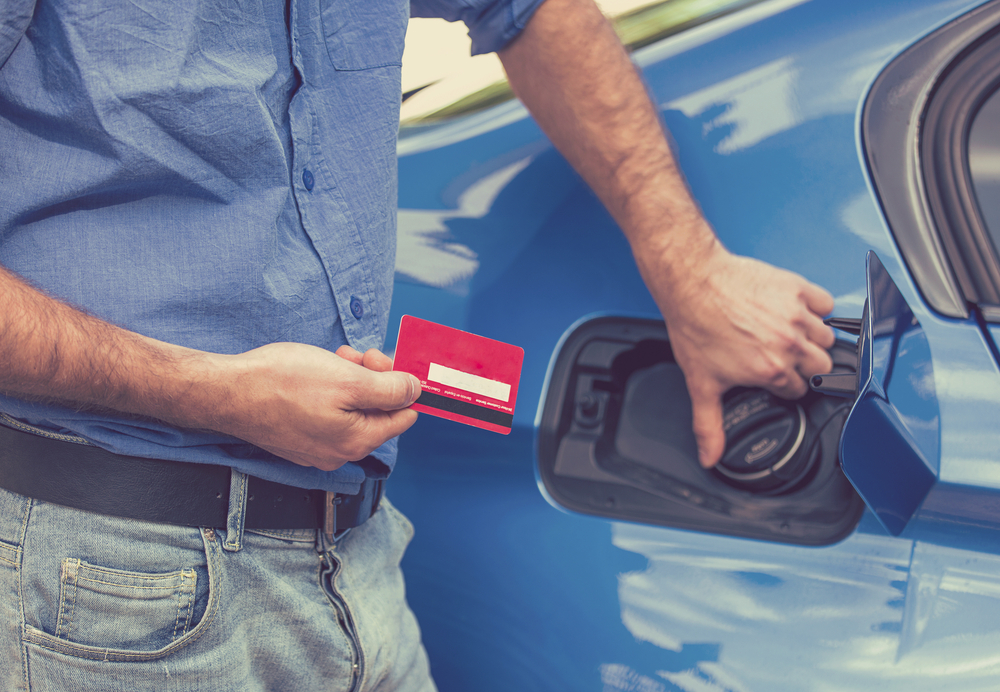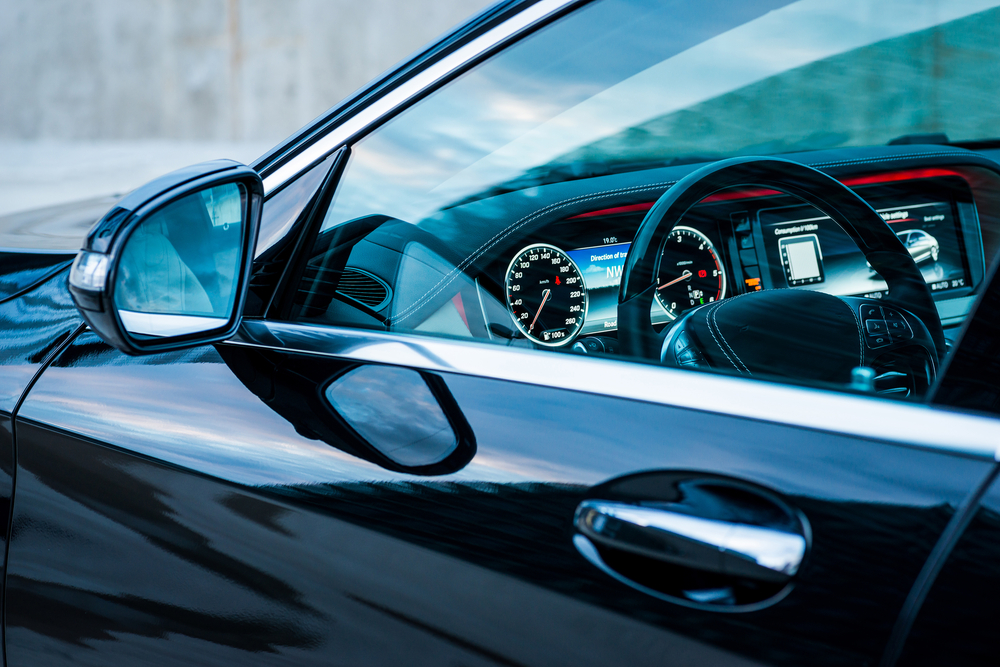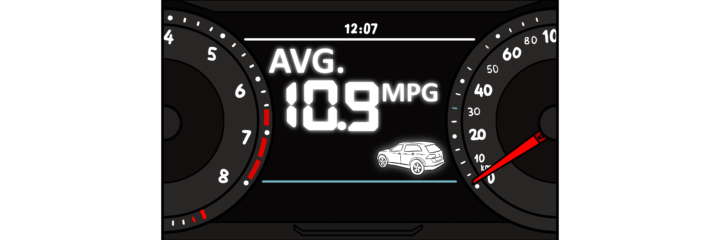Wasting gas is a topic on many people’s minds right now. Yet, even still, over a billion gallons of fuel and several billion dollars in gas money are wasted every year through inattention, bad habits, and falling behind on basic servicing and maintenance.
Even a brief review of both your vehicle and your habits is almost certain to reveal tips and tricks which will save significant sums on your regular fuel stops. These changes don’t need to cost the earth; in fact, many of them are free, instant, and come with side benefits which apply to you and your vehicle. There are tons of ways you can reduce your fuel consumption, but the three things that can make the biggest difference are to:
Reduce overall speed. Knocking-off just 10 mph from your highway speed can lower your fuel bill by 14%, and still get you home with plenty of time to spare as long as you plan to leave a tiny bit sooner.
Eliminate aggressive driving. Avoiding rapid acceleration, heavy braking, and sudden jerky shifts has the potential to cut wasted fuel by 40% in start-stop traffic.
Keep up with maintenance. Sticking to your vehicle’s advised maintenance schedule is a boost that impacts more than just you’re safety. Clogged air filters, low tire pressures, and poor alignment can each cost you 10% of your fuel economy. Letting the small things slip has big consequences over time.
Old habits can be devilishly hard to break, there’s no denying that. Change isn’t easy, but new habits, applied consciously, can become old habits surprisingly fast. These changes can make your reliable runner economically comparable to brand new models for very little cash and only small investments of effort. So to give you an extra boost, let’s dive in to the details on the ten main ways you can get better mileage.
1. Drive Less
The number one way you can reduce your fuel usage is to cut down the number of miles traveled. While this sounds hard to do, it’s easier than you might think. Recent events have already shown the idea isn’t an entirely far-fetched fantasy. Home-working and flexible options have already got us some of the way there.
Adding to this by creating or using schemes such as a car-pooling rotation, can positively impact your fuel consumption, local traffic, and annual mileage.
For nearby destinations, it can even be possible to forget the car altogether in favor of a health-boosting walk or cycle. In addition to reducing your fuel consumption to zero, the benefits it can have on your health are almost immeasurable.
2. Plan Your Trips
Some of the largest fuel efficiencies to be found are made by thinking about our driving from outside the car. To maximize our fuel economy we need to think of the car as a resource to be relied on as sparingly as possible. Planning out your weekly journeys, for example, may find opportunities to combine multiple trips into a single drive and get the most value out of every mile and minute spent on the road.
A shift to the way we think about commuting and work has been a recent change for many which has led to healthier and more frugal habits. Working from home has helped huge numbers of people reduce their annual mileage to save time and money daily. Even changing schedules to working from home part-time or working 4 longer days instead of 5 shorter ones can save a lot over the course of a year.
Flexible working options can help too. Avoiding rush hour alone can drastically improve your fuel economy, give you back time in the day, and lower the stress levels brought about by frustrating traffic jams.
3. Accelerate and Stop Slowly
The single biggest variable in your car’s fuel efficiency, performance, and reliability is you. Drive well and you can escalate the performance of an average truck to a respectable economy. Drive poorly and even the most frugal hybrid can become a gas-guzzling monster.
Planning ahead and observing conditions just an extra 40-50 yards down the road can give you the time and space needed to drive a bit more smoothly and go easy on your vehicle. Ease off the throttle and gentle on the brakes to bring your vehicle to a gradual halt. Do the reverse to get back up to speed and you’ll use far less fuel over time. Planning ahead isn’t only more frugal, it’s less stressful on the driver too.
While changing your driving style is a big shift that takes some getting used to, it’s one with big impacts over the lifetime of your car. With a little practiced effort and some light research you’ll feel better about the drive, and save money too.
In stop and go traffic, a gentle and progressive style can save as much as $1 per gallon on fuel costs.
4. Reduce Your Top Speed
On the roads today it often feels like everyone is desperately trying to rush, cut-in, and overtake at maximum speed all of the time. Very few seem to slow down to wonder why.
Traveling at top speed everywhere you go rarely, if ever, saves you any noticeable time at all. Breaking the speed limit for an hour’s trip has barely enough savings to cover the intro to your favorite streaming series. Worse still, it risks the cost of a pricey ticket on top of added fuel costs to your entire journey.
Taking 10 mph off your highway speed can save 14% on fuel bills alone for the trip. Factored into the added risks, the chance of a ticket, and extra stress placed on your car pushing the speed limits well best their boundaries starts to seem less and less worthwhile.
5. Lighten the Load
Something every driver is guilty of, at one time or another, is forgetting to clear out the debris of long ago trips. Car debris, everything floating around in the back seats, foot-wells, and boot, is unnecessary added weight. Put simply, weight costs fuel. High school physics class would remind us that accelerating, turning, and de-accelerating any mass costs us energy. In your car, that energy comes from your gas tank, paid for at the pump every time you fill-up.
An honest review of your car’s interior inevitably turns up things that you don’t need to carry. A snow shovel in July, half-full bottles of water, and luggage which really should have been unloaded weeks if not months ago.
Cleaning out can save cash, solve an errant rattle, and give you back space you forgot you once had. Every 100 lbs of extra weight taken out of the car can increase its fuel efficiency by 1%.
6. Maintain Your Vehicle
While the person in the driver seat may be the single biggest target for fuel savings, it pays dividends to pay close attention to what is going on under the hood too. Letting maintenance slip by weeks and months, or forgetting to replace consumable parts can drastically impact consumption and cost you far more in the long term.
Something as small as a clogged air filter can impact fuel efficiency on older cars by 10%. Letting the small things slide to save time, money, or both can come back to bite exceptionally hard. Letting filters go long past their expiration mileage, using the oil you’ve got instead of the oil you need, or just skipping a service or two can all add up to poorer fuel economy and a shortened car lifespan.
Poor alignment, the kind built up over winter months and pot-holed streets, can rob yet another 10% of your vehicle’s efficiency. It’s slightly more tricky but well worth the time. A quick stop by the mechanic will give you back lost fuel efficiency and give you a better driving experience as well.
7. Take Care of Your Tires
Of all the many components and parts that make up the modern vehicle, only one set does the vital job of connecting your car directly to the road. Tires are critical, not only to performance and safety but to fuel efficiency too.
Fill them too high and they lose grip, wear unevenly, and become prone to sudden catastrophic failure. Air them too little and much of the above still applies, but they become that much less efficient too. Soft tires waste gas needlessly by increasing rolling resistance and making your car work that much harder for every mile it travels.
Pressures below guidelines can add an instant 10% to your fuel costs. The good news is it’s a problem that can be fixed instantly for cheap. Simply air up to the manufacturer’s recommendations, often found on a sticker inside the door, and you’re good to go.
8. Don’t Idle
There are yet more savings to be made by changing the way you think about cars and driving. Eliminating unnecessary idling, for example, goes a long way to preventing needlessly burning fuel in a vehicle sitting stationary for more than a few seconds.
This technique applies to running the car first thing in the morning just as much as it does to 4-way lights and traffic jams. Modern cars don’t need to ‘warm-up’ for excessive periods of time before moving. Bad habits can often lead us to waste and costs which we rarely think about day-to-day.
Making use of tools such as start/stop to switch-off your engine in traffic, or cruise control to maintain a steady pace on the highway, can help you make your driving more efficient and keep good habits without even trying.
Driver aids and in-car tools are very often overlooked as simple ways to improve your car and make the most of your driving. It pays handsomely to read-up on their instructions and use them wisely.
9. Reduce Drag

There are yet more efficiencies to be found by looking outside the car. Aerodynamics, looking at how air flows around vehicles, doesn’t just apply to race teams, fast cars, and aircraft; it affects your daily commute just as much, if not more.
Roof racks, externally carried cargo, and even a broken fuel filler cap can all add significant costs to the journeys you make. The costs of each issue gets greater and greater the faster you travel. Each one is something you want to solve fast to cap ever-increasing costs on all your road trips.
A rooftop cargo box alone can lower your car’s efficiency by more than 25%. Take a cargo trailer instead and the losses almost double to 50% at 80 mph.
The way your car moves through the air, particularly at speed, is critical to its efficiency. These losses don’t come about only by adding more cargo outside your car. Just a small change, such as opening the windows, can negatively impact the efficiency of a compact sedan by more than 8%.
10. Invest in Fuel Efficiency
Occasionally, being in the position to make a major investment can help make a positive impact for many years down the line. Purchasing a new vehicle to see greater savings into the future can be just that investment.
The vehicle you buy today doesn’t have to be brand new or straight off the showroom floor either. The biggest environmental and financial savings to be made can come from purchasing a car with a little mileage on the clock and a couple of years already on the plate.
Newer vehicles are almost invariably more efficient, cleaner-burning, and more economical than older models. The reduction in emissions and savings in fuel, particularly combined with the tips and tricks taught here, can lead to staggering savings weeks, months, and years down the line.
These savings can be further compounded by trading big and heavy for small and light. Swapping out an SUV for a compact sedan, especially a hybrid, can make your journeys that much leaner.
Save Fuel and the Environment

Combining a handful of these practical driving tips could save the average driver, traveling 12,000 miles annually, hundreds of dollars per year.
The side benefits stack up pretty handily too: reduced maintenance bills, less wear and tear, better car performance, more time, lower stress, and extra exercise on a tight schedule too. The impact starts with your wallet but provides benefits to your health, family, and the environment too.
Whether you’re cutting out waste to reduce your carbon footprint for others or to save cash for yourself doesn’t matter all that much. The end result is the same and the benefits apply to everyone. They come from simple good habits that grow gradually over time.


